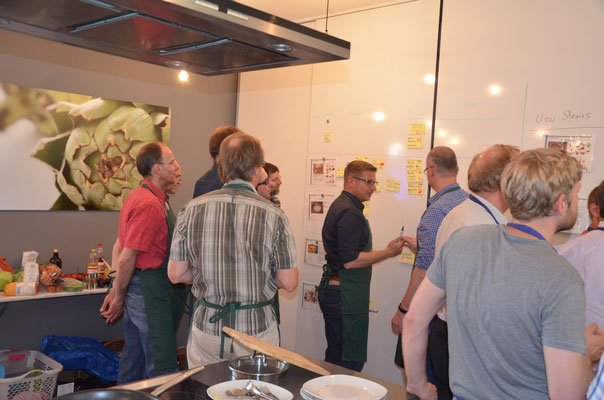Why is it so important to set an achievable sprint goal?
Focus is one of the 5 core agile values.
A team can only focus if the scope of the SPRINT is manageable. If SPRINTs are over-scheduled, the performance and mood of the team suffer, as does the ability to plan the SPRINT results. Over-scheduled teams do not do more, but less.
Priority is usually unclear. “If everything is important, everything is equally important and in conclusion nothing is important anymore!” Scrum Masters know and preach this and yet often cannot change it. Too much is perceived as urgent and every SPRINT is planned as if there is no tomorrow.
Talking alone often does not convince the Scrum Master to take stories out of the SPRINT. Even the repeated experience of every SPRINT that the team overestimates its performance does not necessarily lead to a change in thinking. After all, there are always good reasons why things didn’t work out this time and why everything will go better next time. So what do you do when talk and experience don’t lead to realistic planning?
Focus Sprint vs. current Sprint
Against the background of this challenge, I had the idea of introducing parallel SPRINTs for a team: The FOCUS SPRINT and the current SPRINT. The FOCUS SPRINT is filled with the high-prio stories of the current SPRINT until the score is at maximum velocity. In fact, in the beginning it is better to plan slightly below the Velocity. This way the team can experience how good it feels to complete a SPRINT successfully and completely. It is important that there is a clear SPRINT GOAL. This simplifies the selection of stories and enables the completion of larger thematic blocks.
With the introduction of the FOCUS SPRINT, there is no need to push stories from the current SPRINT into the backlog. Psychological resistance to moving stories to the backlog is high. There is a fear, probably justified, that once outsourced, it will not find its way back. The question “What can we do without?” is replaced by “What do we absolutely want to create to achieve the goal?”
The team agrees to work on the FOCUS SPRINT stories as a priority. However, a team member can assign himself/herself stories from the current SPRINT if he/she is not able to work on Focus stories at the moment. This ensures that team members are well utilised and can choose topics that they personally consider important and that they can work on well with their expertise. In the illustration you can follow the course of the two SPRINTs: The inner blue circle represents the FOCUS SPRINT and the outer one the current SPRINT.
FOCUS SPRINT and current SPRINT run in parallel. In Planning, the team concentrates on the stories of the FOCUS SPRINT, with the possibility of dragging stories of the current SPRINT into the FOCUS SPRINT.
Conclusion
In the dailies, both SPRINTs are displayed on the board, but the team only goes through the stories of the FOCUS SPRINT. However, team members can report on work and challenges of the current SPRINT on their own if needed. In the review, all completed stories are demonstrated, regardless of whether they are assigned to the Focus or the current SPRINT. Also in the retrospective, team members reflect on their collaboration in general.
We have had good experiences with this approach. Are you facing similar challenges? I would be interested to hear how you have dealt with them.
